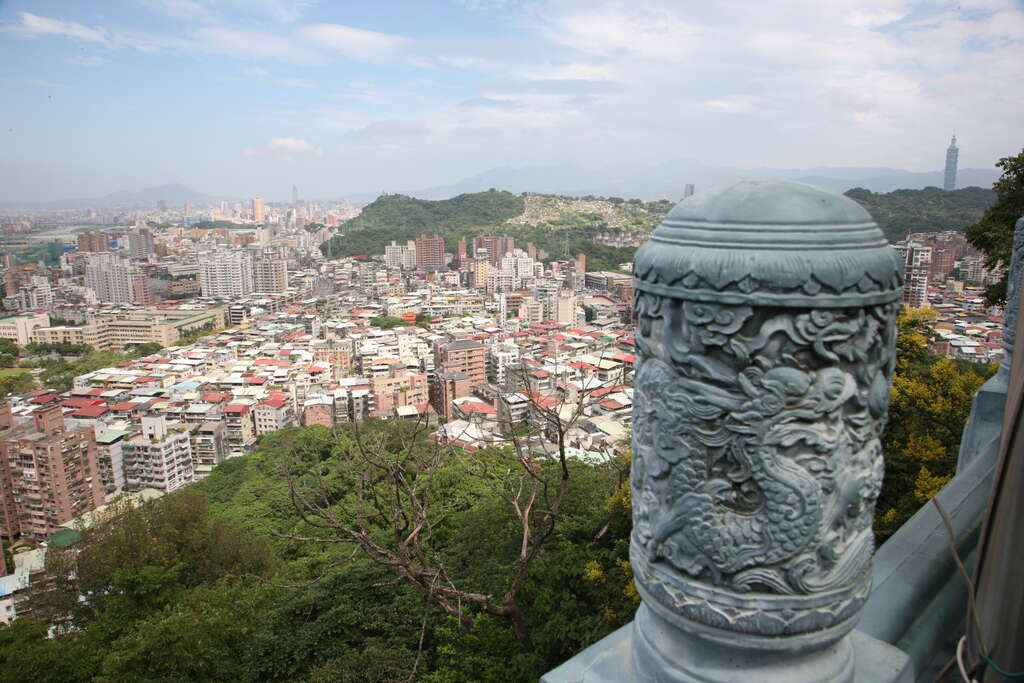Ergeshan System_Xianjiyan Nature Trail Introduction
Xianji Rock, located in the Jingmei area, is also known as Xizikou Mountain. The surrounding views are excellent, and it is said that Lü Dongbin, one of the Eight Immortals, left his footprints here, enhancing Xianji Rock's fame and attracting curious visitors hoping to witness divine traces. It is also a popular spot for local residents to engage in hiking activities. Like Qixing Mountain, Xianji Rock possesses a first-class satellite control point. From the archway on Jingxing Road, Lane 243 in Jingmei, one ascends the 78 steps of the Longevity Ladder and then the 100 steps of the Ascending Immortals Path, leading to a lush green trail. Along the way, the diverse green vegetation and the large boulder at the top of Xianji Rock, as well as the healthy trail and Xianyan Temple, offer views of the Taipei basin's streets, creating a serene and pleasant scenery. Though Xianji Rock is not very high, with an elevation of only 144 meters, it boasts great views of the surroundings and is conveniently accessible. Notably, it is equipped with a triangulation point for topographic mapping, as well as a second-class triangulation benchmark. Xianji Rock serves as a friendly "back garden" for nearby residents and is also suitable for family hikes. While it takes some effort to ascend the 78 steps of the Longevity Ladder and the 100 steps of the Ascending Immortals Path, the refreshing mountain breeze from the dense forest quickly alleviates fatigue. The subsequent trail is flat and easy to traverse, with multiple pavilions along the way for rest or sightseeing. Following the newly established bird-shaped markers, one can leisurely complete the hike. The ecological interpretation signs designed by the Housewives' Alliance enhance the journey's educational value. By following the guide, visitors can explore the area's ecological features and natural environment, including the geology of Xianji Rock and the seriousness of land reclamation on nearby slopes. This fun and informative trail experience impresses upon visiting children the importance of ecological education, enriching their childhood memories. Xianji Rock is an ideal outdoor classroom for observing nature's ecology throughout the four seasons. With the changing seasons, the vibrant plant and animal life will undoubtedly make your visit worthwhile. The ecological environment at Xianji Rock is complete and independent, showcasing Mandala flowers in white and cherry blossoms in red during February. The hanging Mandala flowers are unique and toxic, making them a typical "do not approach" species. The cherry blossoms bloom in winter, with tender leaves and fruits appearing in spring, often attracting birds and insects during the transition from winter to spring. From spring onward, various insects such as the flat-headed beetle, weevil, and starry sky beetle become active, while the common green lizard is also a frequent sight along the trail. In April and May, the "May Snow" of tung flowers falls, making it easy to spot the vibrant red-shouldered butterflies amidst the blooms. Starting in May, the sour vine, which loves to bask in the sun atop trees, produces pink flowers, adorning the trees with a rosy coat. The sea of golden flowers from the acacia trees adds lively colors to the early summer hills. In June, the white flowers of the moonflower bloom, while fruit-bearing trees like longan and mulberry also grow along the path, attracting numerous butterflies, beetles, and jewel beetles—making it an excellent opportunity to observe various insects up close. In front of Xianyan Temple, the cultivated hedges, featuring plants like balsam and hibiscus, attract a considerable number of butterflies to gather nectar. Xianji Rock is home to about twenty to thirty species of butterflies, with flitting colors creating a lively atmosphere. The singing courtship songs of the five-colored birds and greenish warblers join the natural symphony along with occasional appearances of birds like the white-browed bulbul, thrush, and red-headed mountain warbler. The red-bellied squirrel, entering its breeding peak, adds its voice to nature's chorus. In November, with the maple leaves turning red, Xianji Rock's abundant vitality may begin to rest, but its elevated scenic views remain popular. Many believe the best time to visit Xianji Rock is at dusk when the sky is painted with colorful clouds followed by the stunning nightscape of Taipei. This small mountain by the Jingmei River is truly remarkable, epitomizing the saying "a sparrow may be small, but it has all the vital organs," and it's no wonder it attracts many visitors on weekends.












